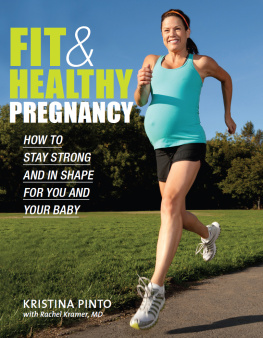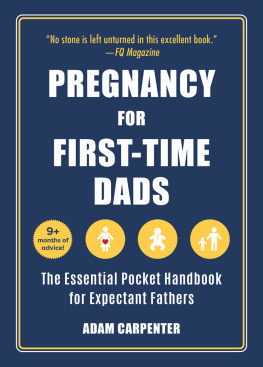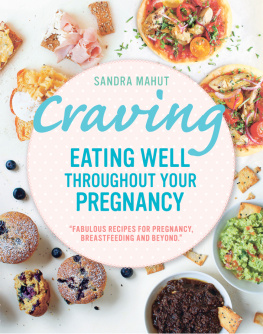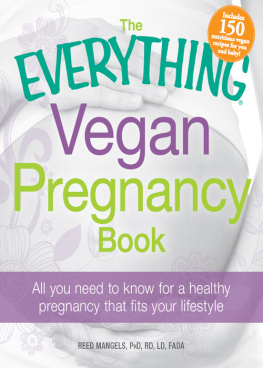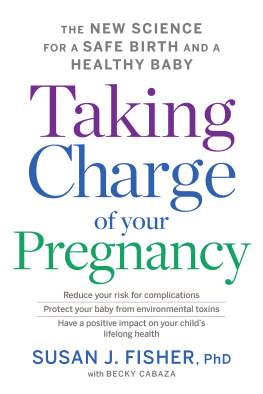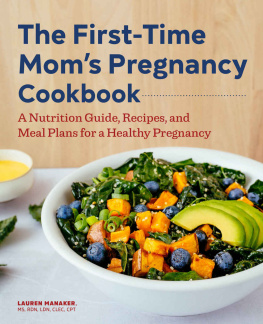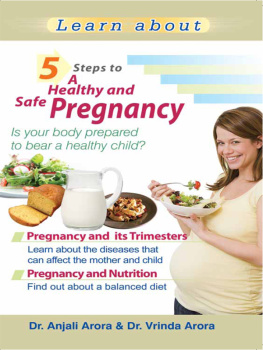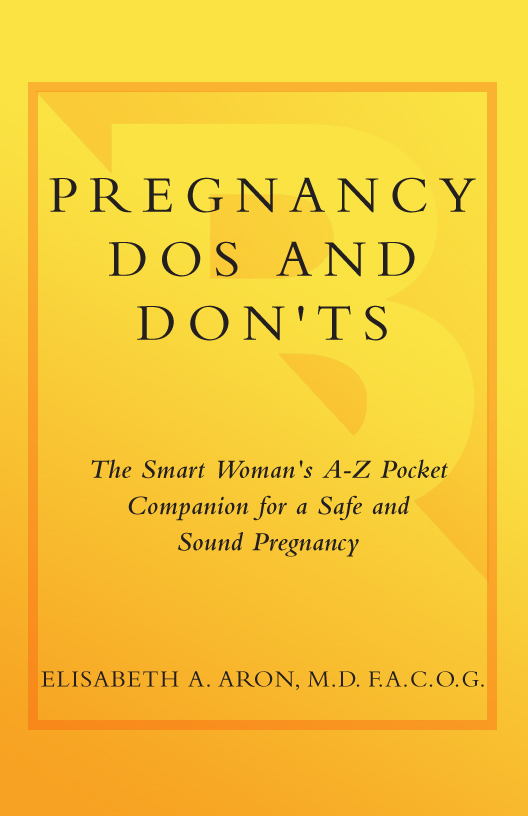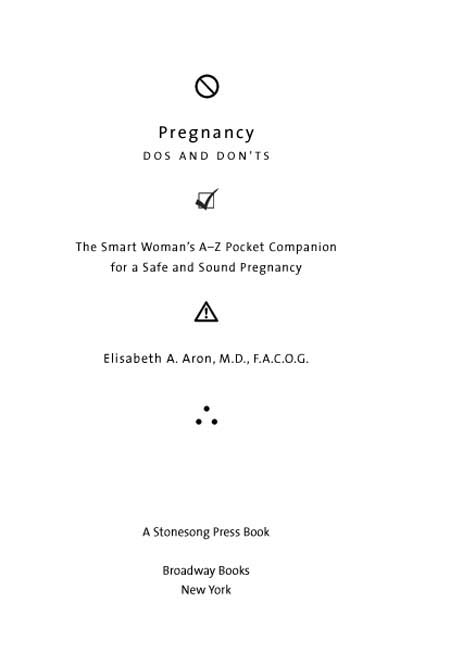I would like to thank Alison Fargis and everyone at The Stonesong Press for giving me this opportunity and lending their expertise and patience. Writing this book has been an eye-opening experience for me.
Many thanks to all the people who helped to shape my career, but especially everyone at Downtown Women OB/GYN (my old home) and the faculty, residents, and nurses at the University of Colorado Health Sciences Center (my new home).
Thanks to Erica Suchman, Ph.D., at Colorado State University for helping me to understand some of the microbiology of food. Thanks to my head cheerleaders, Bruce and Seth.
Finally, I would also like to acknowledge all the scientists who continue to research issues related to women's health. Having done research for a relatively short time, I can only wonder at all the combined hours spent to obtain this information. Without their continued efforts, we would have no advice to give.
INTRODUCTION
The inspiration for this book cam e from my pregnant clients, friends, and family members who admitted to feeling crazy with worry about doing practically anything during their pregnancy We pregnant women are told to avoid all drugs, alcohol, certain foods, and beauty treatments, but are not often told what the exact risks are or why we should avoid these things. Further, most physicians (myself included) rarely know the answers to all of your questions without going online or to the library and doing a bit of research.
In an effort to address some of these issues, I have attempted to produce a reassuring guide of what to avoid and what not to worry about during pregnancy. However, while doing the research, I found two very disturbing things: First, not much is known about many of the things we do to our bodies during pregnancy. Second, a lot of reports show associations between various things and bad pregnancy outcomes. These two facts make it very difficult to offer clear advice on questions that have not yet been well researched. I would love to be able to tell you not to worry, but it just isn't that simple. For many issues, providing advice is not black and white.
This book is not meant to be the ultimate and complete guide to dealing with these issues, but a jumping-off point in an effort to educate ourselves and get the answers we need. There may be topics that you are concerned about that are missing. Information about a given topic may change after the publication of this book. This book is meant to help you think about these issues in an intelligent and insightful way.
HOW TO USE THIS BOOK
Topics are listed in alphabetical order. I have included icons at the start of each entry to allow for a quick guide as to a product's safety. See page xv for a full description of what the icons represent. However, to really understand the issue, you should read the entire entry.
Each entry has a brief description of the topic followed by any known concerns. The concerns may be legitimate or unfounded and may be based on one small study or on years of research.
The bottom line is meant to be the take-home message. When possible, I try to provide a clear answer, but keep in mind that for many topics, no clear answer may be available. In this case you must make your own decision. Further, you and your health care provider may not always agree with my opinion; different people have different comfort levels with some of these issues.
Because many pregnant women need to take medications during their pregnancies, I have included many commonly used medications, but it would be impossible to list them all. Most drugs are not tested on pregnant women, but their safety during pregnancy is examined by the U.S. Food and Drug Administration (FDA). The FDA looks at information gained from animal testing and other methods and then assigns a risk factor category. See Appendix 1 for a description of what these categories mean. The safest thing to do is to avoid any unnecessary drugs/supplements during pregnancy and especially during the first trimester, when the baby's organs are forming. Some drugs are safe in one trimester but need to be avoided in another. Even when the FDA considers a medication safe for use during pregnancy, it is still a smart practice to take drugs only as directed and not to exceed the recommended dosages. This last point goes for everyone, pregnant or not. If you have a question about a medication not listed in this guide, consult your health care provider, your pharmacist, or the Physician's Desk Reference. Often this information can be easily found online. Appendix 2 lists many helpful Internet sources.
In cases where the safety of a drug/supplement is not clearly known, I feel that you should educate yourself to understand the risks and benefits. Know the pros and cons when deciding what is right for you during your pregnancy. It is important to understand that not all risks are acceptable to all women, and we must make choices based on what we feel comfortable with as individuals. We should not broadly restrict activities unless there are good reasons or at least some scientific evidence that those activities could cause harm. For example, by understanding the risks associated with eating sushi, I still chose to eat it during my pregnancy because it is less risky than eating improperly prepared or undercooked chicken. Sushi is a great source of protein and omega-3 fatty acids, which appear to help fetal brain development. For me, the pros far outweighed the cons. As long as you understand the risks, you are capable of deciding what is right for your particular situation. If you are not sure about something you've heard or read about, discuss it with your health care provider.
Some pregnancy concerns seem to be overestimated while others have not been publicized enough. For example, even though we all hear that cats carry Toxoplasmosis, very few of us know that it is much more common to acquire the disease from undercooked meat or unwashed vegetables. A study in 2001 by the Food Safety and Inspection Service of the U.S. Department of Agriculture determined that many pregnant women were either not aware of the dangers of certain foods or did not handle these foods properly in the home. So while we worry about our litter boxes, most of us are not preparing commonly eaten foods, such as hot dogs and cold cuts, properly and safely.
By limiting your exposure to potentially harmful substances, you can actively work to keep your risks to a minimum while still participating in your regular activities. If you need to work with a potentially hazardous substance, such as paint, limit your exposure by using only the amount needed, by wearing protective clothing, and by using the product in a well-ventilated area. If you do something once or twice during a pregnancy, such as dye your hair, it is unlikely that a brief one-time exposure will result in significant harm. Even so, you can reduce the risks by limiting your exposure, researching the chemicals that are used, and letting your stylist know that you are pregnant.
It is important to use common sense when deciding what is right for you during your pregnancy. It is probably wise to avoid things that are unnecessary and may be potentially dangerous, but at the same time, don't obsess over the things that you cannot control. Although there is no known safe amount of alcohol consumption during pregnancy, don't obsess about the glass of wine you drank before you realized that you were pregnant; it is unlikely to cause any harm to your baby. Moderation in diet, exercise, and work will also help to increase your chances of a healthy pregnancy. No one can guarantee you a healthy pregnancy, but it's comforting to know that you can take some precautions to minimize the risks.


